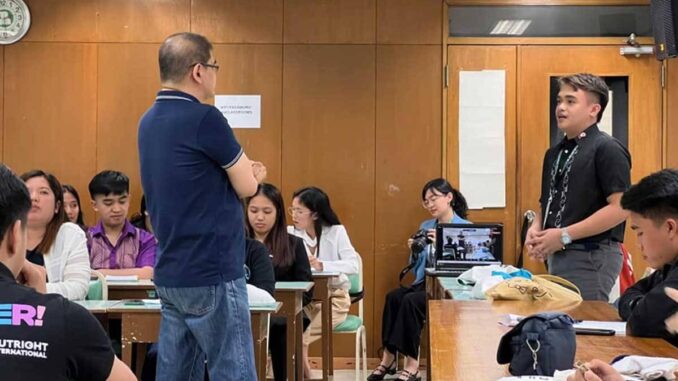
IN the heart of Southeast Asia, the Philippines stands out not only for its breathtaking landscapes and rich culture but also as one of the countries most vulnerable to the impacts of climate change. Its unique geographical positioning and archipelagic nature make the nation particularly susceptible to calamities, rising sea levels and extreme weather patterns.
As the reality of climate change continues to unfold, the urgency for effective climate reporting becomes increasingly paramount in fostering awareness, influencing policy and inspiring action. The art of storytelling emerges as a critical tool in climate reporting, allowing for the humanization of data and the creation of a compelling narrative around these pressing issues.
The Philippines has long been at the forefront of climate challenges. The series of devastating typhoons that have struck the nation, such as the most recent super typhoons Carina, Enteng and Kristine, serve as a stark reminder of the compounding risks the country faces. These typhoons alone claimed over a hundred lives and displaced millions of Filipinos. Such disasters have left indelible marks on the nation’s psyche and raised crucial questions about resilience, adaptation and the need for systemic change. It has even raised questions about the government’s budget for flood control projects.
Anthony Espinosa (right), president of the Sangguniang Kabataan Federation of the Municipality of Kiamba, Sarangani, asks the author questions. PHOTO BY BRIAN DELOS SANTOS
Climate reporting in the Philippines has often leaned toward a factual and data-driven approach, focusing on meteorological reports and immediate impacts on communities. However, this paradigm is shifting. The realization that statistics alone cannot convey the full magnitude of loss and suffering caused by climate disasters has prompted a growing interest in narrative-driven climate reporting. By effectively weaving personal stories, cultural nuances and localized experiences into climate discussions, we can evoke empathy and engage a wider audience on these critical issues.
During the recent Local Conference of Youth Philippines 2024, with the theme “Harnessing Youth Action to Humanize Just Transition in Climate, Energy, Health, Industry and Governance,” I had the opportunity to handle the break-out session on “Climate reporting: Are stories important?”
I shared, “In order to do what the climate crisis demands of us, we have to find stories of a livable future, stories of popular power, stories that motivate people to do what it takes to make the world we need. Perhaps we also need to become better critics and listeners, more careful about what we take in and who’s telling it, and what we believe and repeat, because stories can give power — or they can take it away.”
A study by the Earth Journalism Network and Deakin University (June 2024) entitled “Covering the planet: Assessing the state of climate and environmental journalism globally,” where the author is one of the respondents, said that in our current global moment, “every story is a climate story — and every story, singularly and collectively, has the potential to address the threats faced by our shared planetary habitat.”
Beyond statistics
At its core, effective climate reporting transcends mere information dissemination; it seeks to connect, inform and inspire. By employing storytelling techniques, climate journalists and writers can bring depth to their narratives and illustrate the human experience behind climate data.
Statistics may illustrate the scope of a challenge, but stories encapsulate personal experiences. By sharing the narratives of communities affected by flooding, drought or displacement, writers can draw readers into the emotional landscape of climate change. For instance, featuring the story of a farmer whose livelihood is undermined by erratic rainfall can create a powerful connection with the audience, allowing them to understand the human stakes involved.
In a world inundated with information, stories have the power to resonate. Compelling narratives are likelier to engage audiences, prompting them to reflect on their roles in a changing climate. By embedding local culture and context within these stories, writers can cultivate a sense of familiarity that invites readers to connect with the subject matter personally.
Storytelling can also serve as an empowerment tool for marginalized voices. By highlighting the struggles and resilience of communities most affected by climate change, these narratives can amplify calls for justice and action. Case studies of indigenous groups advocating for their rights in the face of environmental degradation illustrate the intersection of climate action with social justice.
Policymakers are more influenced by compelling stories than by raw data. Personal accounts can fuel advocacy efforts and drive home the urgency of enacting effective climate policies. When grassroots movements are highlighted, they can galvanize support from constitutions that can lead to tangible changes in governance and resource allocation.
As one of the session participants, Luisa Baguiwet shared: “I learned that reporting about the state of our climate plays a crucial role in documenting climate changes in our planet over a span of time. If Mother Nature was considered a person, Climate Reporters would be considered as Mother Nature’s Loyal Messengers that translate her message of her current state of well-being in a language that we humans understand — and send these to us with a sense of urgency to act.”
The author is the founder and chief strategic advisor of the Young Environmental Forum and a director of Climate Tracker Asia Inc. He completed a climate change and development course at the University of East Anglia (UK) and an executive program on sustainability leadership at Yale University (USA). You can email at [email protected].


Be the first to comment